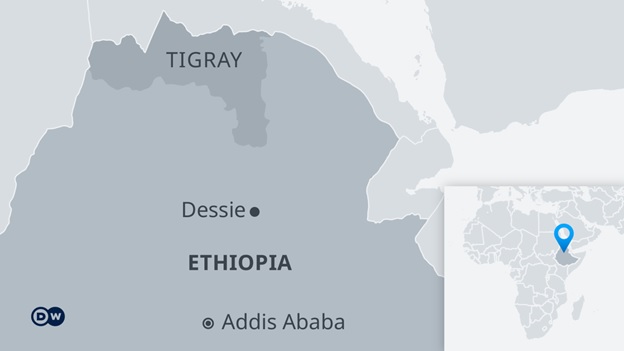Ethiopia’s Tigray conflict erupted in November 2020 and later spread to neighboring regions. Yet, covering the war is a huge challenge, with press freedom severely constrained and journalists facing intense pressure.

Since the beginning of this year, Ethiopia’s National Defense Forces allegedly carried out airstrikes that killed at least 108 civilians in Tigray. As medical and food supplies run dangerously low, the World Food Program (WFP) has warned of a “humanitarian disaster.” About 50,000 children are believed to be severely malnourished, though the figure could be much higher.
But despite the scale of the crisis, comprehensive reporting on the conflict has been made nearly impossible. No journalist has set foot in Tigray for more than six months.
Verifying facts and collecting testimonies from residents on the ground is further prevented by an all-out communications blackout. Instead, information trickles out of Tigray through aid agencies and the scarce satellite communication points in the regional capital Mekele.
Since the declaration of a country-wide state of emergency on November 2, 2021, a climate of media repression has further deepened the information vacuum.
“We have a situation where there is no due process, no fair trial,” said Angela Quintal, head of the Africa Program at the Committee to Protect Journalists (CPJ).
“Journalists are detained arbitrarily and aren’t appearing in court, so this has a chilling effect on the broader media community,” Quintal told DW, adding that two journalists had been killed in the past year. “That is the ultimate form of censorship.”
Reporters killed
Unidentified gunmen murdered Dawit Kebede in Mekelle on January 19, 2021. He was a reporter for Tigray TV, the state-owned broadcaster. In 2010, Kebede won the CPJ International Press Freedom Award.
According to the AFP news agency and Addis Standard news website, security officers were responsible for the murder. Kebede’s case is still under investigation. He was only 41 years old when he was gunned down.
Another journalist, Sisay Fida, who worked for the Oromia Broadcasting Network, was killed in Dembi Dollo on May 9, 2021. The CPJ believes he was targeted because of his journalism.
The climate of repression, especially against Ethiopian journalists, has led to widespread fear and sometimes self-censorship. “I’ve had meetings with media authority officials. They were saying it’s your country. You have to defend the national interest”, a journalist based in Addis Ababa who wished to remain anonymous told DW. He complained about harassment on social media, saying it is the worst form of pressure: “I receive threats almost daily. They DM you on Twitter or send you a message on Facebook, sending death threats.”
Read more: Ethiopia: The daunting task of reporting the Tigray conflict


